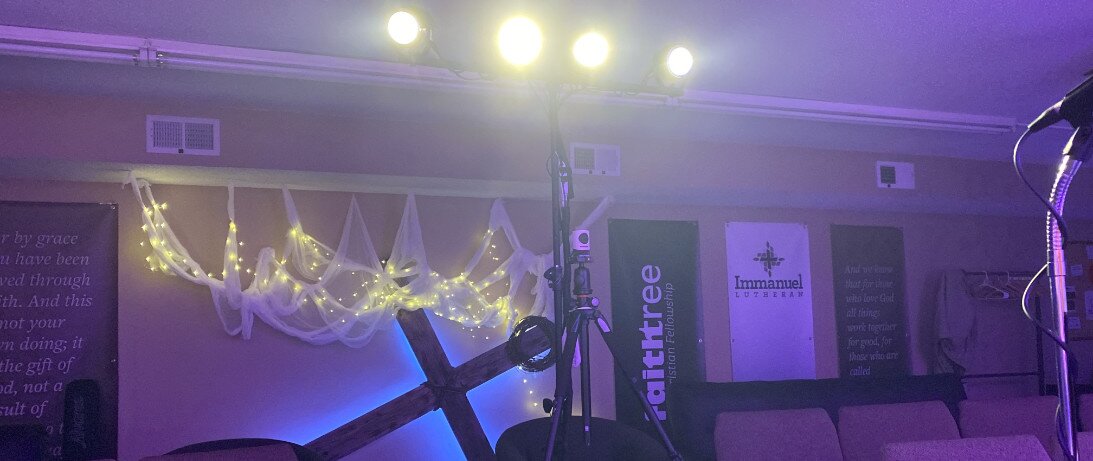Tip for Getting Live Streaming Up Quickly
A know a lot of churches all over are scrambling to implement live streaming thanks to the coronavirus situation. I thought I would share a suggestion that may not help for tomorrow’s services, but will help for the weeks ahead when live streaming remains an unusually important part of worship. In a word: Mevo.
We have been using a Mevo live streaming camera at FaithTree for several years now for our worship nights and will also be using one at Little Hills (including for a live stream event this Monday). You can see FaithTree’s Mevo in the photo above — it’s the tiny white and red camera on the tripod. I had been intrigued by the concept and nabbed one for a great price on Prime Day 2017. The great thing about it is that all it requires of you is that you put it on a tripod (or something else of appropriate height) and connect to it via an app on a phone (your phone or an old phone you don’t use any more but that can connect to Wi-Fi) or iPad.
Once connected, Mevo can stream to multiple destinations at once and many (such as Facebook Live, YouTube Live and Twitter/Periscope) are free to stream to. Facebook forbids streaming to multiple destinations, so we stream to YouTube Live and Twitter/Periscope, simply sharing a link on Facebook. Churches can also take advantage of LifeChurch.tv’s free Church Online Platform to embed the YouTube live stream into a very friendly, dynamic chat interface that lets live streamers interact with each other, ask for prayers and more.
Why not just use a cell phone camera for live streaming? A few reasons. First, it is often the case that where you want to be as the camera operator and where the camera ideally should be located are not the same. With the Mevo, the tiny, unobtrusive camera can be in the front of the church without drawing attention to itself while the operator can be stand or be seated anywhere.
Second, if you don’t fancy yourself a great singer, having a camera with a microphone closer to other people is sometimes a big plus. The Mevo’s camera has a very respectable built in microphone that does a good job of capturing the congregation singing, rather than just the camera operator.
Third, it has a really nifty trick to make live streams more engaging: the Mevo has a higher resolution camera than it needs for broadcasting and it uses the extra “space,” so to speak, to allow you to simulate a multi-camera setup (imagine watching a live stream or TV show where the video cuts to different parts of a stage or follows a speaker as he moves about). If you aren’t into cameras and filming, you may not appreciate what this means on paper, but you’ll notice the difference in the results produced. It just feels right.
Fourth, there is a lot more to explore if you want to use this time to build a serious live streaming arrangement that goes beyond the coronavirus crisis. It can do on-screen graphics (including lower-thirds). It can hook up to your sound board for higher quality audio. Unlike many simple live streaming apps, it can save full quality footage for later editing. In other words, it does a lot of stuff you don’t need to worry about right now, but will give you expandability for the future.
One last tip for anyone who is considering a Mevo: buy a good battery pack — Anker ones are often on sale for $20-$30 — and keep the camera hooked up to it. It is easier than trying to get power to the front of your church where the camera is, much cheaper than Mevo’s boost battery pack and safer than counting on the Mevo’s internal, tiny battery to last through a service. You do not want to feel led by the Spirit to go a little long on the sermon and watch the camera die in the middle of it.
I hope this helps!







Start the Conversation